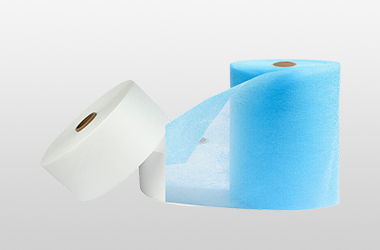1. The fiber web of meltblown nonwoven fabric is made up of finer, shorter fibers; 2. The uniformity of the fiber web of meltblown nonwoven fabric is very good, and the hand feel is particularly soft; 3. Both the filtration performance and liquid absorption of this meltblown nonwoven fabric are relatively good.
One category of nonwoven goods is known as meltblown nonwoven fabric. The majority of its basic materials are pellets made of polypropylene (also known as pp material). In order to create meltblown nonwoven fabric, the following steps must be completed: polymer feeding, melt extrusion, fiber forming, fiber chilling, web creation, and lastly consolidation into cloth. It is named fabric due to the fact that it looks like cloth and has specific qualities.
Products made from meltblown nonwovens find common use as filter materials, medicinal and sanitary materials, garment materials, battery diaphragm materials, wiping materials, and other similar applications. In addition, spray painting and the chemical industry are the two most common applications for meltblown nonwoven materials. The "heart" of masks is the filtration of micron-sized particles like dust, germs, and haze, and the primary function of masks that are formed of meltblown nonwoven textiles is to fulfill this function.
The majority of medical masks have three distinct layers to their construction. The filter layer in the center is made of meltblown nonwoven fabrics, while the innermost and outermost layers are made of spunbond nonwoven fabrics (S) (M). The structure of the microfibers, together with the static charge that they generate, is what acts as a barrier and provides protection against viral dust and droplets.
Polypropylene, meltblown material, meltblown fabric, and finally the mask are the approximately chronological steps in the manufacturing chain for masks. The pricing of the upstream chemical raw materials polypropylene and meltblown materials have not changed much. This is because there is an excess domestic manufacturing capacity for both of them. The industry of meltblown nonwoven fabric in China has always been on the smaller side. The fabrication of masks requires around 10,000 tons of meltblown nonwoven textiles each year, and the daily output of big firms is approximately 10 tons of this material. Under typical conditions, the level of demand in the market is somewhat consistent, and the sector as a whole has the characteristics of being both tiny and dispersed.
Because of the effects of COVID-19, the number of people wearing masks has increased dramatically, and it will be difficult for any nation to provide such a big demand for masks in such a short amount of time. There is now a significant number of masks available on the market; however, there is no meltblown nonwoven fabric, which has become a more significant barrier to the growth of masks. Even if the price has increased to 400,000 yuan per ton from 20,000 yuan per ton before the pandemic, it is still difficult to find even a single piece of fabric.
It is difficult to expand the production of meltblown nonwoven fabric in a short amount of time due, in large part, to the fact that more equipment is required. Certain essential pieces of machinery, such as meltblown die heads and meltblown templates, are required to be imported; also, the supply cycle and assembly time are both quite lengthy. The quickest production time for the product is between three and five months, but it might take as long as six months or even a year. On the other hand, the manufacturing process for meltblown glass is quite high, and many professional technologies need the development of ability.

The meltblown nonwoven machines offered by SUNTECH, a specialized producer of nonwoven fabric machines, are of the highest quality and can be purchased at reasonable costs.
The length of the disposable flat mask is 19.5 centimeters, and its width is 17.5 centimeters. The standard fabric used for the mask is a 25g meltblown nonwoven fabric. It is possible to produce around 1.1 million final masks using one ton of meltblown nonwoven fabric. The N95 mask has four layers of fabric, and each layer weighs 25 grams per square meter of meltblown nonwoven fabric. In a harsh environment, this kind of fabric may generate 400,000 masks. The meltblown nonwoven fabric of the Fish-type KF94 employs 25g of material per square meter and has a production capacity of about 300,000 pieces.
Gram weight film width main shaft diameter / 1000000 / amount of meltblown nonwoven fabric for each mask, the formula is 25*260*219.8/1000000/2 = equal to the number of sheets, the aforementioned statistics are all accurate and do not include any waste. In this particular scenario, it is anticipated that some wastes would need elimination. The facts can only serve as a point of reference; ultimately, the real circumstances will take precedence. We also have a lot of non woven fabric slitting machine at SUNTECH. You can discover more with a simple click.




